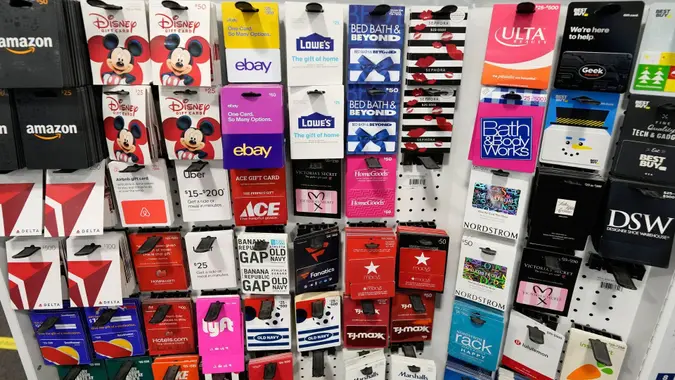Kickstart a Frugal 2025 With These 9 Expert Money Challenges

Commitment to Our Readers
GOBankingRates' editorial team is committed to bringing you unbiased reviews and information. We use data-driven methodologies to evaluate financial products and services - our reviews and ratings are not influenced by advertisers. You can read more about our editorial guidelines and our products and services review methodology.

20 Years
Helping You Live Richer

Reviewed
by Experts

Trusted by
Millions of Readers
If you indulged in a bit too much online shopping or partook in a few too many girls’ trips in 2024, you may be looking to start 2025 on a more financially savvy note. After all, those Steve Maddens were undoubtedly cute, but ordering 10 different styles may have been overkill.
Since it’s never a bad idea to build better financial habits, cut unnecessary expenses, and boost savings, GOBankingRates put together nine ways for you to kickstart a frugal 2025, according to some expert penny pinchers.
52 Week Challenge
Proving that a little bit adds up over time, Joy Wrenn, founder of FrugalCreativeLiving.com, suggests saving money each week for all 52 weeks of the year. Start small with $1 the first week … then add an additional $2 the second week until you finally add an additional $52 the last week of the year.
At the end of 52 weeks, you will have accumulated $1,378 which can be put towards retirement or other investments. This small, weekly contribution is a consistent way to build savings without it feeling like too much of a financial strain.
Negotiate Discounts
“Call your phone, cable, or internet providers, and every monthly or annual plan you have and ask for discounts,” said Laurie Hise, founder at Passionate Penny Pincher. Sometimes it’s as simple as just asking to put on those big boy pants. “Don’t hesitate — many companies are willing to offer better rates to retain customers.”
No-Spend Month Challenge
Commit to one month of minimal spending where you only purchase necessities like groceries and medication, avoiding unnecessary expenditures like trendy clothes and dining out. See how little you can spend and how much more you save as a result. Wrenn advised using this time to take inventory of how many items you don’t need — and how many you can do without moving forward.
Pause Little Luxuries
Less extreme than a no-spend challenge, smart shopping expert at TrueTrae.com, Trae Bodge, suggested specifically foregoing the things you pay for that you can do yourself (“little luxuries”) and, instead, saving that money. “For example, stop getting manicures or having your car washed, or buying your lunch for a period of months and set that savings aside,” said Bodge. “You’ll be stunned by how much you’ve saved!”
Penny-a-Day Challenge
Similar to the 52-week challenge, this one involves saving one additional penny each day for a full 365 days. Add $.01 on the first day of the year, add $.02 on the second day of the year … up to $3.65 on the last day of the year.
At the end of the year, Wrenn approximates that you will have accumulated roughly $668. This challenge is great for those who don’t have much money to work with because you are never putting away more than $3.65 per day.
Clear Out Clutter
Everyone has things lying around the house they never use — so why not profit from them?
“Sell unwanted clothing at a local consignment shop or furniture on a site like OfferUp,” said Bodge. “If you have camera or videography equipment that you’re no longer using, you can sell it to a site like MPB.com. They will give you a quote based on what you have, send a prepaid shipping label, and once they receive it and all is good, they will pay you out very quickly.”
Round Up Challenge
Wrenn suggests paying attention to those stray decimal points each time you make a purchase and forming a useful habit in the process. For instance, if you purchase a coffee for $4.75, round up to the nearest dollar and commit to putting the extra $0.25 into savings.
“Many banks offer automated round-up features to make this process way easier for you,” Wrenn said. So make that chump change work for you!
Plan Your Meals
Hise advises planning a weekly menu of homemade food to avoid last-minute splurges on takeout — which “not only saves money but also encourages healthier eating habits.” Strategically checking grocery sales and planning meals around discounted items can also help lower grocery bills.
Charity and Savings Challenge
If you aren’t typically that motivated to save money, perhaps tying it to a cause you care about could help trip the circuitry. “For each dollar you save, set aside a portion for some charitable cause of your choice,” said Wrenn. For instance, consider matching $0.50 for every dollar you save or $0.75 for each. Reward others for your own ability to save and you may literally be saving someone’s life.
More From GOBankingRates
 Written by
Written by  Edited by
Edited by 























